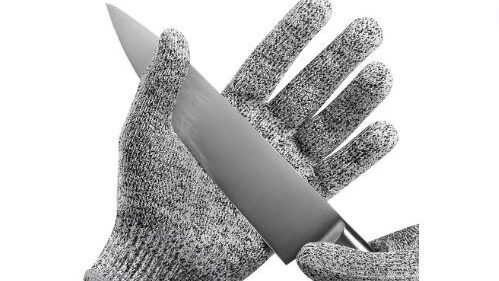
Choosing the right personal protective equipment (PPE) is essential to ensure your safety while carrying out daily tasks. This should be of utmost importance to you. While familiarity and understanding of tools and training in the use of highly dangerous tools are typically considered the primary factors for cutting safety, cut-resistant gloves are also an important consideration.
Therefore, it is necessary to analyze their advantages and limitations to use them in conjunction with safety knives to reduce the risk of injuries, accidents, and workplace incidents.
Cut-resistant gloves are designed to protect the wearer’s hands when working with sharp tools, providing protection against cuts while using potentially hazardous tools, thus minimizing the risk of danger.
Can cut-resistant gloves prevent all cuts?
The objective of designing cut-resistant gloves is to provide a certain level of protection to reduce the risk of hand injuries. However, cut-resistant gloves cannot eliminate the risk of injury. In simple terms, even the highest level of cut-resistant gloves cannot guarantee full protection against all tools, especially in extreme situations. Nevertheless, they can significantly reduce the likelihood of injury. These gloves offer additional preventive measures to protect fingers and hands from:
- Lacerations
- Cuts
- Knife injuries
- Cutting accidents
In general, the main reasons for lacerations and cutting accidents are workers not taking necessary safety precautions when using cutting tools. Safety precautions are crucial in preventing accidents, and cut-resistant gloves serve as a good supplement.
The effectiveness of cut-resistant gloves depends on various factors such as:
- Force
- Direction
- The sharpness of the blade
- Length of the cut
In short, it depends on the type of cut-resistant gloves, namely their materials and design.
Equipping employees with cut-resistant gloves not only protects their safety but also demonstrates your commitment to maintaining high standards of employee safety. However, no matter how good the cut-resistant gloves are, proper safety practices by workers are paramount.
The performance of cut-resistant gloves varies in different environments; some industries may require a higher level of protection against cuts than others. For instance, workers using ordinary cutting tools for box opening have different needs compared to those handling metal products, pipes, potentially hazardous substances, or steel cables.
What are the principles and advantages of cut-resistant gloves?
The design of cut-resistant gloves aims to prevent cuts to the hands using special cut-resistant materials. However, according to surveys, nearly 70% of hand or finger injuries occur due to not wearing gloves. Therefore, wearing cut-resistant gloves is paramount for you.
It is worth noting that exposed blades can still cause injuries to other parts of the body (such as arms or legs). Therefore, it is usually necessary to provide multiple pieces of personal protective equipment (PPE) to fully protect employees.
Cut-resistant materials
Cut-resistant gloves are made from various materials and come in different styles. Additionally, their safety levels are usually assessed according to relevant standards established by the American National Standards Institute (ANSI) and/or European Standards (EN).
Choose the appropriate cut-resistant gloves according to your needs
It might seem natural to assume that the highest-rated gloves are the ones you should buy, but this is not always the case. Choosing cut-resistant gloves that suit your needs best should provide the most effective protection against hazards.
For example, wearing heavy-duty gloves for simple tasks may not give employees enough flexibility to perform their jobs. Therefore, they may consider removing the gloves to complete tasks, which can compromise their safety.
Limitations of cut-resistant gloves
To be frank, no glove can completely prevent cuts, so the ability of cut-resistant gloves to maintain safety is limited. Workers may develop a false sense of security after wearing gloves, leading them to perform risky tasks they wouldn’t otherwise do.
Furthermore, cut-resistant gloves are not effective against all hazards. For example, they may not provide sufficient protection against other types of injuries such as chemical exposure, heat, or electrical shocks. Additionally, they may become damaged due to frequent use or exposure to harsh conditions, requiring regular replacement to maintain effectiveness.
Cut-resistant gloves may not withstand direct contact with sharp blades, so there is still a risk of injury. However, after wearing cut-resistant gloves, wounds that may typically require stitches may be reduced to the level of only needing adhesive bandages.
If you are interested in gloves, please feel free to contact us at any time.
How to Measure Glove Sizes – Source: AIBON
Medical Gloves – Source: FDA
Nitrile Gloves or Latex – Source: AIBON
Medical Gloves Guidance Manual – Source: FDA

